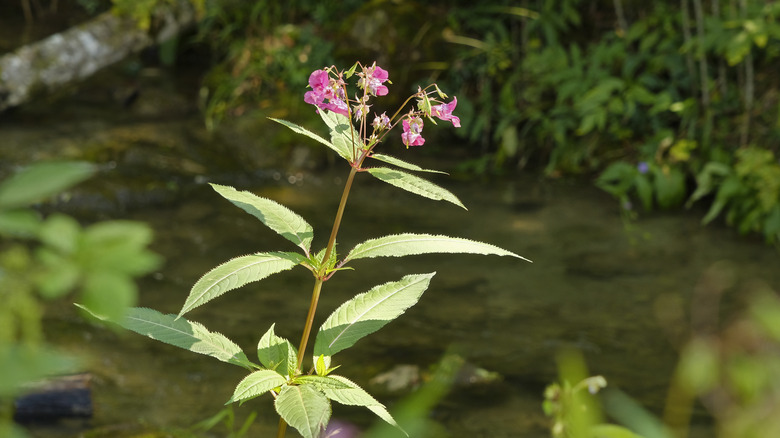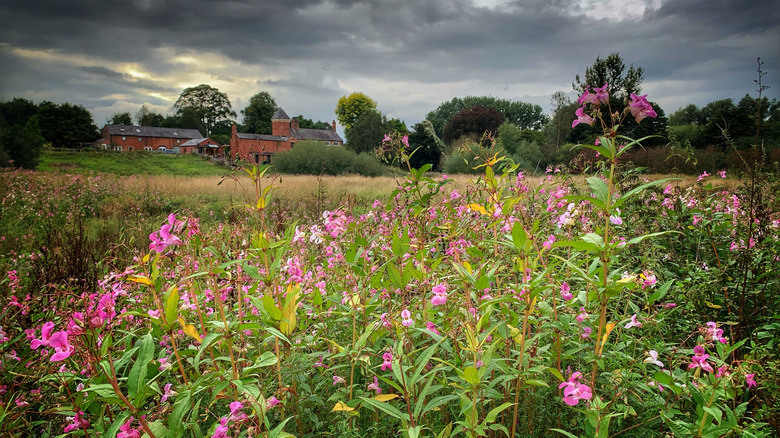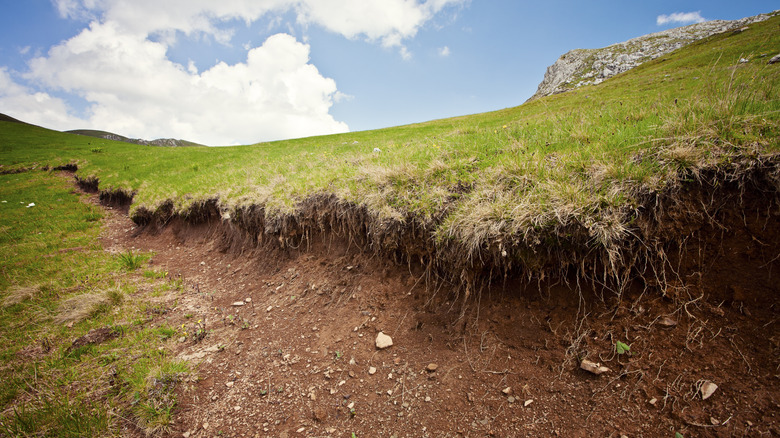Why You Need To Keep Himalayan Balsam Out Of Your Garden
Are you planning to introduce new plants to your garden soon? If so, have you considered how these newcomers might impact your green space and the environment around you? One plant to watch out for is Himalayan balsam (Impatiens glandulifera). At first glance, this plant might seem like a great idea. However, looks can be deceiving. Himalayan balsam is far from being the perfect guest you might imagine it to be. It prioritizes its own rapid growth, often at the expense of your existing garden inhabitants and your soil's health. Moreover, its influence isn't confined to your backyard; it poses significant environmental risks, such as soil erosion.
Originating from the western Himalayas, this plant is visually stunning, and its aroma can be quite captivating. Every summer, its reproductive cycle is characterized by an explosion of vibrant flowers and the secretion of sticky, sweet-smelling nectar from glands beneath its leaf stems. While these traits might add to its surface appeal, they should not divert your attention from its less-than-stellar ecological track record. Therefore, before finalizing any planting decisions, it's crucial to be thoroughly informed about the potentially detrimental environmental impact of such a plant. By doing so, you make strides toward cultivating a garden that is aesthetically pleasing, ecologically harmonious, and responsible.
Its aggressive growth overwhelms other plants
As you nurture your garden, you envision a balanced ecosystem where each plant complements the others. However, Himalayan balsam doesn't share that vision. In fact, this invasive species is incredibly prolific and can produce at least 500 seeds per year from a single plant. Not only do these seeds have a high germination rate, but they also grow rapidly once they take root, making them difficult to manage once established. Additionally, these seeds can shoot up to 7 meters away from the parent plant, putting neighboring gardens and natural areas at risk.
Himalayan balsam's colonization leads to a loss in biodiversity and competes for nutrients with native plants. As this invasive species takes over, it alters the soil's nutrient composition, depriving other plants of the resources they need. This can result in less vibrant flowers and a lack of nutrients for your chosen plants. Essentially, Himalayan balsam bullies other plants right out of their home ground. So, as you plan your garden and imagine the harmonious sanctuary it could be, remember to safeguard it from invasive species that don't play well with others.
Environmental and ecological impact
You may think that the invasive behavior of Himalayan balsam affects only your garden, but the consequences extend far beyond your fence. The plant is notorious for colonizing wet habitats like riverbanks, where its shallow root system contributes to soil erosion. Unlike native plants, which have developed deep roots and mutually beneficial relationships with local fauna and soil, Himalayan balsam does little to maintain the structural integrity of the land it colonizes. So, what happens during the rainy season? You can expect more soil erosion, not just in your garden but in sensitive natural areas. The soil washes away, leaving a habitat that's less stable and less supportive of native plants and animals.
And it's not just the soil you should be worried about. When Himalayan balsam invades, it disrupts entire food chains by elbowing out other plants. Pollinators, such as bees, might flock to its nectar-rich flowers, but at what cost?These pollinators end up neglecting native plants that rely on them for survival. The problem spirals from there. When native plants aren't pollinated, they don't produce the seeds or fruit that feed other animals. These imbalances are not quick fixes; they can take years, even decades, to correct. And all this starts with a simple choice you make in your garden. The more judicious route is to focus on native plants that can enrich your garden while coexisting harmoniously with local ecosystems.


